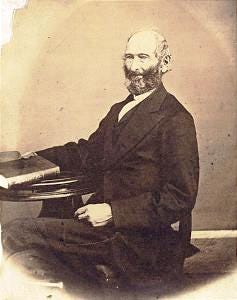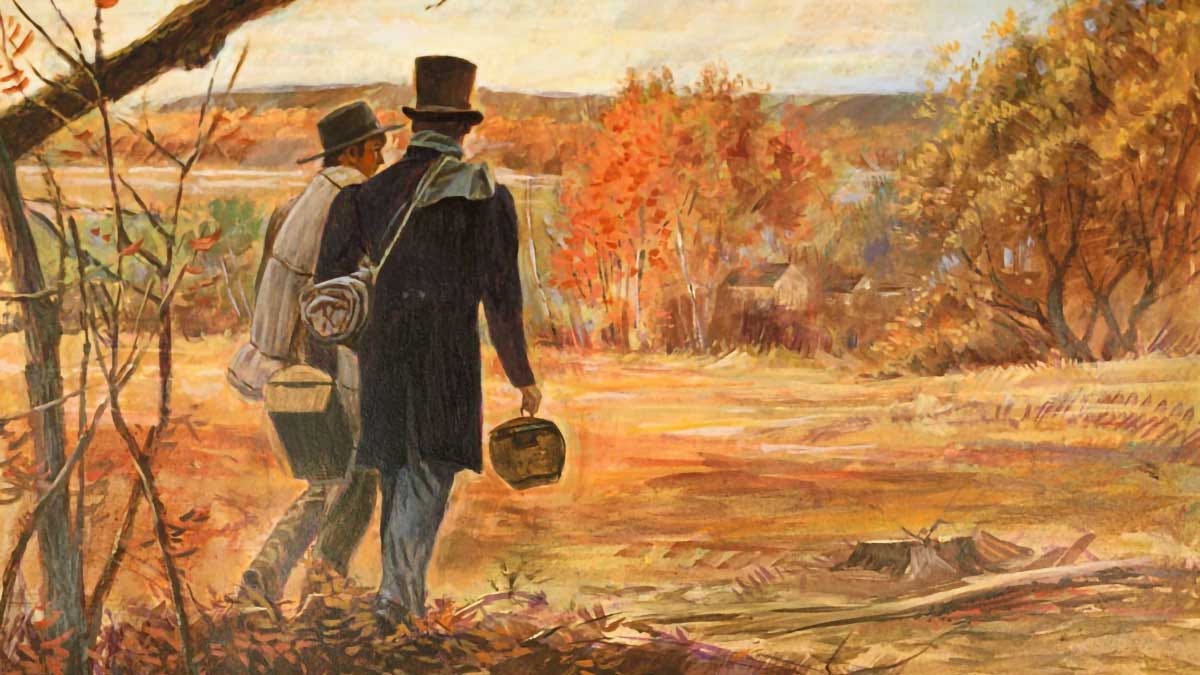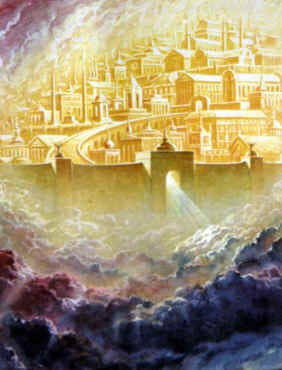A Mere Sketch of the Things That Have Transpired
Reflections on the Book of John Whitmer (Part 1)
I promised to read John Whitmer’s record of Church history in conjunction with my study of the Doctrine and Covenants this year.
Scott C. Esplin’s introduction to this book in his article "A History of All the Important Things" (D&C 69:3): John Whitmer's Record of Church History” is excellent. Esplin traces Whitmer’s History from its origins to the present. He records the reasons for John Whitmer’s reluctance to forfeit his manuscript to Church leaders, and shares a detailed account of everything that happened to the manuscript thereafter.
I was surprised to learn of the way that Whitmer’s History was perceived among early Church leaders, including the Prophet Joseph Smith and Sidney Rigdon. Esplin observes that:
Though John Whitmer began his history with the goal of recording “all the important things which he shall observe and know . . . for the good of the church, and for the rising generations that shall grow up on the land of Zion” (D&C 69:3, 8), his official record keeping ended with his excommunication in 1838. Afterward, Joseph Smith and Sidney Rigdon sought the history. A letter they sent to Whitmer reflected not only their perceptions of his record but also the divide evident between him and the leaders of the church. Accusing him of “incompetency as a historian, . . . never . . . capable of writing a history,” they wrote, “We were desirous of honoring you by giving publicity to your notes on the history of the Church of Latter-day Saints, after making such corrections as we thought would be necessary, knowing . . . that writings coming from your pen, could not be put to press without our correcting them, or else the Church must suffer reproach.” [3]
What happened? Why did Joseph Smith and Sidney Rigdon accuse John Whitmer of “incompetency as a historian”? No wonder Whitmer refused the request to surrender his history. Joseph Smith and his associates began a new record, now known as History of the Church. Evidently they were suspicious of what Whitmer may have written, or revised, after apostatizing from the Church in 1838.
In his article, Esplin answers questions such as:
What happened to “The Book of John Whitmer” after his parting from the church?
In addition to Joseph’s initial efforts, what other attempts were made by church leaders to acquire the history?
How did it eventually come into the possession of the Reorganized Church of Jesus Christ of Latter Day Saints (now Community of Christ) and subsequently get published?
What misunderstandings have persisted over the years regarding John Whitmer’s contributions and record?
Now that the Book of John Whitmer has been preserved, copied, and transcribed in the Joseph Smith Papers, I am reading it with delight. Whitmer recorded the major events that transpired in the early Church after those that Oliver Cowdery had already recorded. Oliver Cowdery also apostatized from the Church in 1838, but subsequently he returned.
Whitmer’s History is written in simple language and it contains many of the revelations that are now in the Doctrine and Covenants. I am grateful that Whitmer recorded the revelations, but because we have access to these revelations elsewhere, I am most interested in his own commentary on Church history.
The early part of his commentary is relatively tame. But I appreciate insights such as the following:
After the above law or Revelation was receivd, the elders went forth to proclaim repentance according to commandment, and there were numbers added to the church. The Bishop Edward Partridge visited the church in
isits several branches, there were some that would not receive the Law. The time has not yet come that the law can be fully established, for the disciples live scattered abroad and are not organized, our numbers are small, and the deciples untaught, consequently they understand not the things of the Kingdom. There were some of the disciples who were flattered into this church because they thought that all things were to be common, therefore they thought to glut themselves upon the labors of others.
The time had not yet come that the law could be fully established. Why? Because the disciples lived scattered abroad, were not organized, their numbers were small, and they were untaught. The only difference that I see between then and now is that our numbers are much greater.
Whitmer describes how the Lord, through His Prophet Joseph Smith and the revelations, set His Church in order and harmony was restored. Whitmer notes that the Saints “began to learn wisdom, and treasure up knowledge which they learned from the word of God.” By experience “they advanced in the way of eternal life.” Keep in mind that Whitmer was appointed as the Church’s first historian in 1831, but the majority of his history may have been composed in 1838, the same year that he was excommunicated. After his excommunication, Whitmer revised his history and added critical commentary on Church leadership.
Whitmer made a record of the efficacy of spiritual gifts, including healings and revelations, among the early Saints, and he described the experience of some of the early missionaries:
Some of the Elders returned from their missions, to gain some rest and instructions. They rehersed some of the wickedness which they had seen among this generation: while they were proclaiming the gospel, and warning the people, some would cry false prophits, false christ &c. Some would receive the word gladly, until their priests would cry delusion! delusion!! for this generation abounds with priests, which they have heaped up unto themselves, and every one is teaching for hire: consequently every one is looking for his gain from his quarter. They will pursecute the disciples, and cause their followers to do likewise Out of the mixed multitude some obey the gospel of peace and bring forth fruit some an hundred fold.
In chapter 5 of his History, Whitmer notes that some of the Saints supposed that Kirtland was the location for the New Jerusalem spoken of in the Book of Mormon. The early Saints were eager to know about and gather in the New Jerusalem, even though they didn’t yet know its precise location. Why have we modern Saints lost this desire and enthusiasm to know about and gather in the New Jerusalem?
At first John Whitmer told Joseph Smith that he would rather not keep a history of the Church. Nevertheless, he demonstrated his desire to accept the will of the Lord by petitioning Joseph for a revelation on the matter, which Joseph received and which he, John Whitmer, recorded in his History. Whitmer explained why he picked up his History where Oliver Cowdery left off:
Oliver Cowdery has written the commencement of the church history commencing at the time of the finding of the plates, upto June 12, 1831. from this date I have written the things that I have written, and they are a mere sketch of the things that have transpired, they are however all that seemed to me wisdom to write—many things hapened that are to be lamentd because of the weakness and instability of man. The Devil having a gr[e]at hold on the hearts of the children of men, and the foolish traditions of our fathers, is to be lamented, for they count themselves the children of wisdom, and great, knowledge, in consequence of which the fulness of the gospel finds its way to but few of the hearts of this generation. Although their hearts must be penetrated, whethey they will hear or whether they will forbear.
What a great observation and perennial truth. Not much has changed in this regard since the time when Whitmer wrote it.
At a conference of the Church in Kirtland on June 3, 1831, the Prophet Joseph Smith and others received remarkable revelations:
Therefore the elders assembled from the East and the West, from the North and the South. And also many members.
Conference
ofwas openedandby prayer and exortation by Joseph Smith Jr. the Revelator. After the business of the church was attended to according to the Covenants.The Lord made manifest to Joseph that it was necessary that such of the elders as were considered worthy, should be ordained to the high priesthood.
The Spirit of the Lord fell upon Joseph in an unusual manner. And prophecied that John the Revelator was then among the ten tribes of Israel who had been lead away by Salmanaser King of israel, to prepare them for their return, from their Long dispersion, to again possess the land of their father’s. He prophecied many more things
thata[s]king the many, he said that if Joseph Wakefieldthat I have not written. After he had prophecied, he laid his hands upon Lyman Wight to the High priesthood after the holy order of God. And the Spiritof[illegible]◊ordfell upon Lyman, and he prophecied, concerning the coming of Christ, he said that there were some in this congregation that should live until the Savior shoud decend from heaven, with a Shout, with all the holy angels with him. He said the coming of the Savior should be, like, the Sun rising in the east, and will cover the whole earth, so will the coming of the Son of man be. Yea, he will appear in his brightness, and consume all before him. And the hills will be laid low; and valies be exalted; and the crooked be made straight; and the rough smooth. And some of my brethren shall suffer marterdom, for the sake of the religion of Jesus Christ. and seal the testimony of Jesus with their blood. He saw the hevans opened, and the Son of man sitting on the right hand of the Father. Making intercession for his brethren. the Saints. He said that God would work a work in these Last days that tongue cannot express, and the mind of is not capable to conceive. The glory of the Lord shone around.
God will work a work in these last days that tongue cannot express and the mind of man is not capable to conceive. I believe that this prophecy refers to the great and marvelous work that the Lord will yet accomplish. During this same conference, the Prophet Joseph Smith also cast out the devil:
Joseph Smith Jr. Prophecied the day Previous that the man of Sin should be revealed. While the Lord poured out his spirit, upon his servants, the Devil took occation, to make known his power, he bound Harvy Whitlock <and John Murdock> so that he could not speak and others were affected but the Lord showed to Joseph the Seer, the design of this thing, he commanded the devil in the name of Christ and he departed to our Joy and comfort.
John Whitmer mentions the foundations of the city of Zion and he quotes Oliver Cowdery’s account of the laying of the first logs in Zion. He mentions his trip to Zion with Oliver Cowdery to publish the Revelations and the Commandments. According to Whitmer’s History, by December 1, 1832, there were 538 members of the restored Church of Jesus Christ in the United States:
About these days the Lord gave a Commandment for Joseph the seer and N.
W.K. Whitney the Bishop at Kirtlnd to go and cry repntanc [repentance] to the cit[i]es of Boston New York and Albany. and bear testimony of their utter abolishment if they did not repnt and recive the gospel. Zion is prospering at presnt and high priests are stationed to watch over the several branches. Decmbr 1, 1832, there are now 538 individuals in this land b[e]longing to th[e] church. And it came to pass that in the fall of th[e] year 1832, th[e] disciples at Ohio recived th[e] gift of tongues and in June 1833 we receved th[e] gift of tongues in Zion.
After this, Whitmer transcribed a threatening letter that the Church received from the citizens of Jackson County, Missouri. It is a fascinating letter that reveals the contempt, hatred, and bigotry of the citizens of Jackson County toward the “Mormons” whom they considered to be “deluded fanaticks,” “weak and designing knaves,” “the very drggs [dregs] of that society from which they came,” “lazy Idle and vicious,” and a threat to their practice of slavery. These citizens also feared that the Mormons would establish a theocracy.
The “Mormons” were unwilling to comply with the demands that they leave. Soon thereafter, mobs attacked the Mormon printing press, tarred and feathered Edward Partridge and Charles Allen, and threatened to kill other members of the Church.
I will read the rest of John Whitmer’s History as I progress in my study of the sections in the Doctrine and Covenants that correspond with his History.







